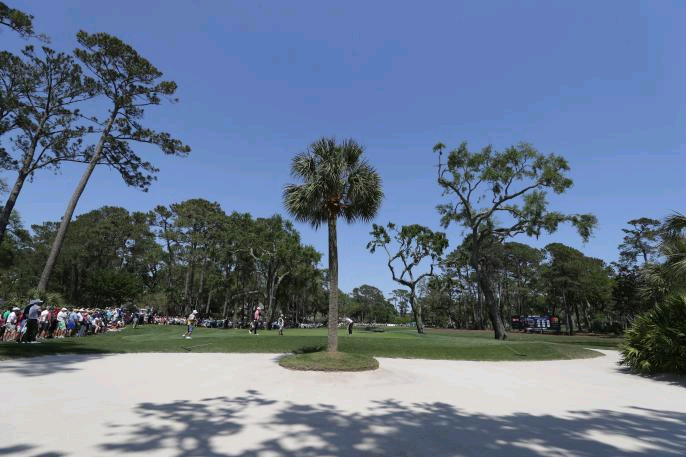Harbour Town is one of the tour’s low-profile gems—and this par 3 embodies Pete Dye’s genius
Harbour Town is one of the tour’s low-profile gems—and this par 3 embodies Pete Dye’s genius

The lowcountry of the Carolinas and Georgia—a sultry region of stoic live oaks, dank pine-tree jungles and sunbaked stretches of intracoastal marsh—is one of the country’s most distinctive environments. Located primarily on remote and difficult to access barrier islands, the lowcountry remained almost entirely unexplored by residential and resort developments until the early 1960s. Arnold Palmer introduced it to America almost all at once, along with its previously unseen style of golf, when he won the inaugural and televised Heritage Golf Classic in 1969 at the new Harbour Town Golf Links on Hilton Head Island.
As attractive as the lowcountry is, the landscape is largely homogenous, not a great asset for creating varied golf holes. Courses are lucky if they can steal small sections of frontage along open rivers and wetlands before returning to the uniformity of their wooded interiors. What continues to make Harbour Town unique (and the site of the always-compelling RBC Heritage) is not the famous final two holes that explode upon the shore of Calibogue Sound but rather the individual character Pete Dye (in collaboration with Jack Nicklaus) was able to draw out of each inland hole. Fifty-five years after it was built, the par-3 seventh remains one of the most distinguished short holes in the lowcountry, no small feat.
Most other architects know they would get skewered for creating a hole like the seventh, so they wouldn’t. But criticism, real or imagined, never deterred Dye. During the clearing of pines, a triad of large specimen oaks was discovered, arranged just far enough apart to fit a green within the apse. Dye did just that, creating a bean-shaped green that lays like a fallen hammock at their base, with the two oaks at the entrance forming a pair of goal posts that players must hit their tee shots through. The putting surface is elevated several feet above a field of sand creating a kind of floating island, and a water feature running diagonally in front and along the left adds an extra dimension, one horizontal layer upon another to offset the vertical focal points.





